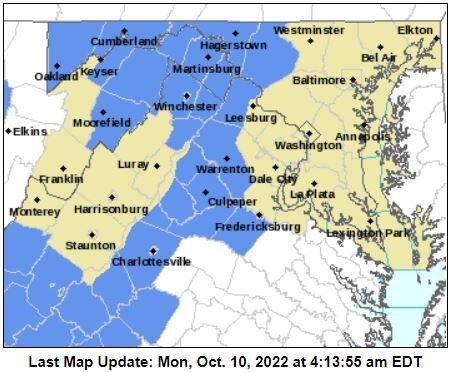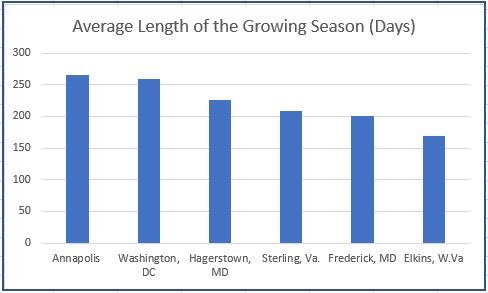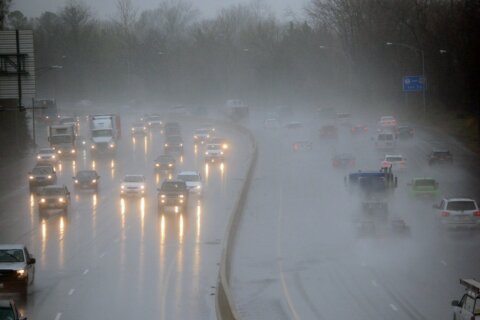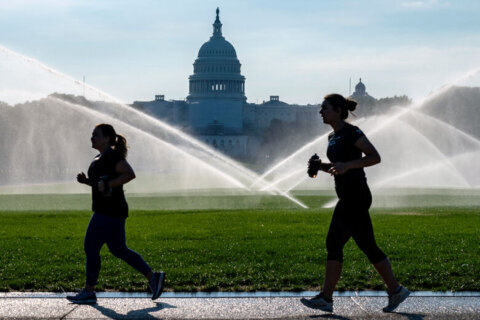Many residents west of D.C. were alerted to frost advisories and freeze warnings late this weekend and even early this morning.
Even though a recurring pattern this morning has prompted additional frost advisories, there is a void of these alerts in what is typically the colder spots of the Shenandoah Valley and West Virginia mountains.
What’s up with that? The answer is actually quite simple.
The National Weather Service discontinues frost advisories and freeze warnings for counties following the first hard freeze of the autumn season. A hard freeze is defined as a thick frost that occurs when temperatures dip to 28 degrees or lower under calm-to-light winds. Temperatures this cold for an hour or two around daybreak are sufficient enough to destroy seasonal vegetation.
In the autumn, a hard freeze ends the growing season, which is the period between the final spring killing freeze and the first killing frost of the autumn. This period represents the number of days seasonal vegetation remain active, with crops growing and producing yields for agriculture interest.
Following the weekend’s hard freeze in Pendleton, Grant and western Mineral counties in West Virginia and in Highland, Augusta, Rockingham, Shenandoah and Page counties in Virginia, the weather service will no longer issue frost advisories or freeze warnings for these specific counties until the growing season is deemed underway in the spring. Temperatures there dropped into the upper 20s, and seasonal vegetation was killed by the thick frost on Sunday morning.
The list of counties where frost advisories and freeze warnings will no longer be issued will grow as the month wears on, based on where a cold snap in a front’s wake drops temperatures into the upper 20s. Eventually, the killing frost of the season will migrate to the Chesapeake Bay, and none of the region will see these alerts issued.

Historically, the growing season ends around Oct. 16 for western Virginia and the West Virginia Alleghenies, with a total of 169 growing season days. This year’s hard freeze on Oct. 9 was a week earlier than average.
To put things in perspective, last year’s growing season didn’t end until Nov. 3 with a total of 192 growing season days. This means last year’s growing season was almost 30 days longer than average!

The climate in D.C. is far warmer than in the Alleghenies. Typically, the growing season in D.C. doesn’t end until Nov. 29, with an average of 259 growing days. Based on current trends, the growing season should end a week earlier than average this year, likely occurring around Nov. 23.
Similar to the Alleghenies, last year’s growing season in D.C. far exceeded the average. The final autumn freeze didn’t occur until Dec. 20, with 287 days in the 2021 growing season.








